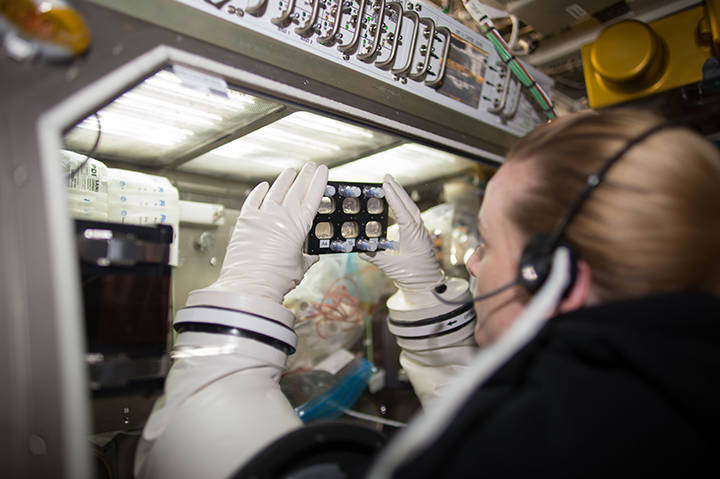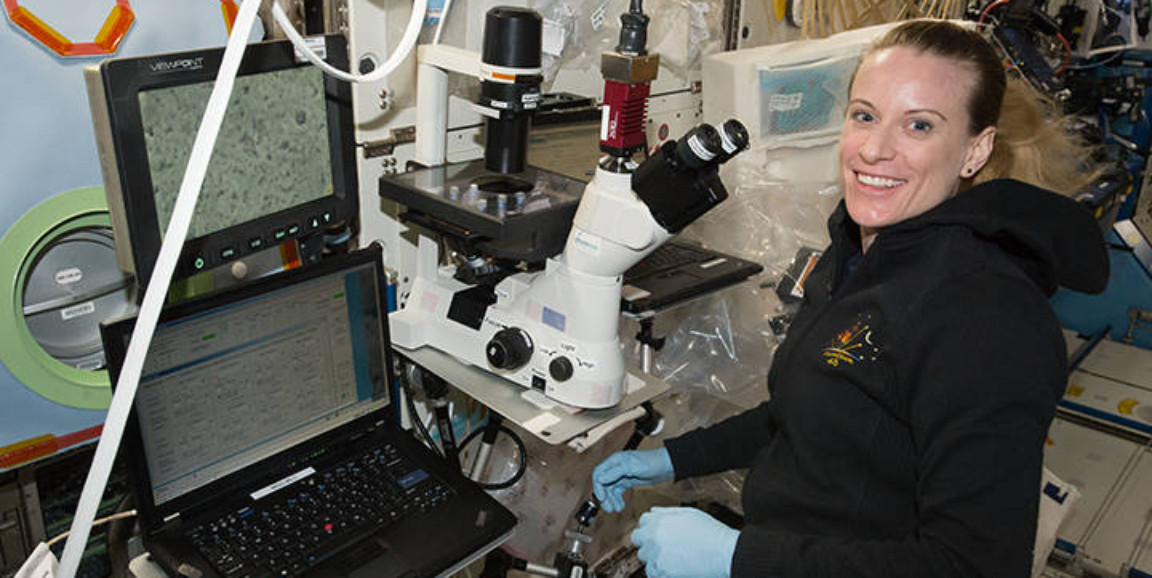It's not often I get to write about astronauts and space travel. In fact, it's happened exactly... never. But now, thanks to a high-flying collaboration of Stanford researchers past and present, I get to write about something that's really out of this world.
Since 2006, iPS cells (short for induced pluripotent stem cells) have been at the forefront of groundbreaking research in biology and medicine. The cells' ability to become nearly any tissue in the body makes them an invaluable resource for physicians wishing to study the effect of drugs on specific, hard-to-obtain tissues or for researchers wanting to delve into the molecular missteps that lead to all manner of diseases.
Now iPS-derived human heart muscle cells called cardiomyocytes have found their way into space, as part of a study by cardiologist and stem cell researcher Joseph Wu, MD, PhD, graduate student Alexa Wnorowski and former Stanford graduate student Arun Sharma, PhD. With the help of NASA astronaut Kate Rubins, PhD, (also a former Stanford graduate student!), Wnorowski and Sharma studied the effect of the low gravity of the International Space Station on the heart cells' structure and function.
They published their findings today in Stem Cell Reports.

As Sharma, now a senior research fellow at Cedars-Sinai, explained in an email:
This project represented an opportunity for biomedical researchers to collaborate with astronauts and engineers in order to learn more about how a very unique environment, microgravity, affects the cells of the human heart.
Sharma, Wnorowski and Wu found that the cardiomyocytes cultured on the space station exhibited different patterns of gene expression than did their counterparts grown back here on Earth. They also displayed changes in the way they handled calcium -- an important regulator of contraction rate and strength.
Interestingly (and perhaps reassuringly for astronauts like Rubins), the cells appeared to return to normal when their five-and-a-half week jaunt into low Earth orbit ended.
"Working with the cells that launched to and returned from the International Space Station was an incredible opportunity," Wnorowski said. "Our study was the first conducted on the station that used human iPS technology, and demonstrated that it is possible to conduct long-term, human cell-based experiments in space."
All in all, the researchers were interested to see how nimbly the cells adjusted to their new, free floating life.
"We were surprised by how quickly human heart cells adapted to microgravity," Sharma said. "These results parallel known organ-level adaptations that happen to the heart during spaceflight."
Photos of Kate Rubins by NASA




